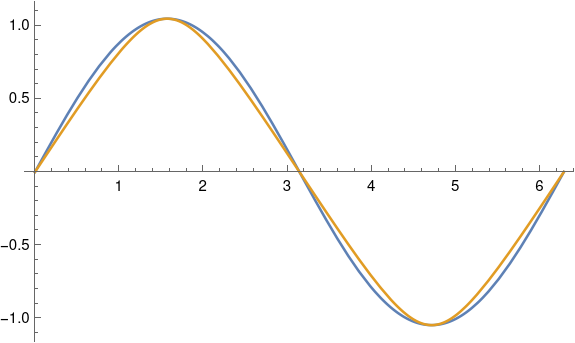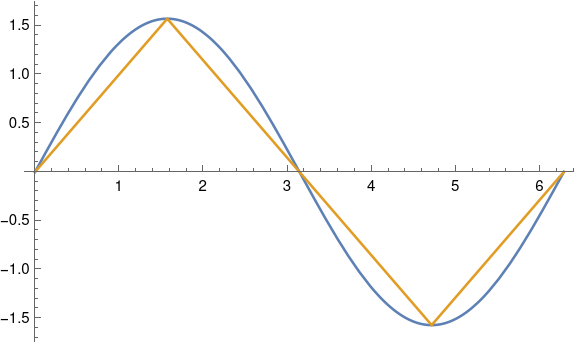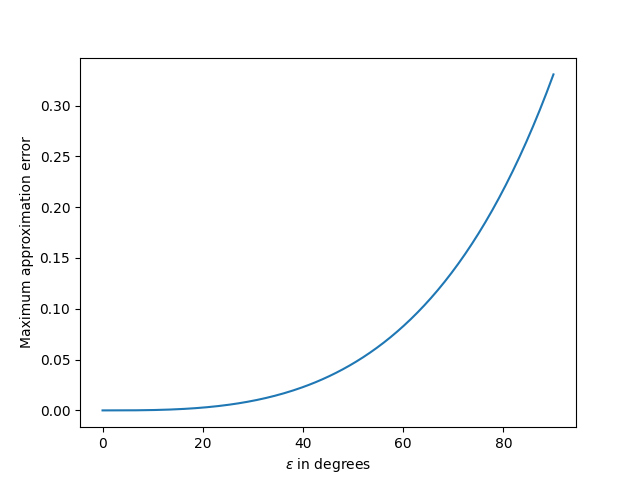Solar declination
This post expands on a small part of the post Demystifying the Analemma by M. Tirado.
Apparent solar declination given by
= sin-1( sin() sin() )
where is axial tilt and is the angular position of a planet. See Tirado's post for details. Here I want to unpack a couple things from the post. One is that that declination is approximately
= sin(),
the approximation being particular good for small . The other is that the more precise equation approaches a triangular wave as approaches a right angle.
Let's start out with = 23.4 because that is the axial tilt of the Earth. The approximation above is a variation on the approximation
sin
for small when is measured in radians. More on that here.
An angle of 23.4 is 0.4084 radians. This is not particularly small, and yet the approximation above works well. The approximation above amounts to approximating sin-1(x) with x, and Taylor's theorem tells the the error is about x^3/6, which for x = sin() is about 0.01. You can't see the difference between the exact and approximate equations from looking at their graphs; the plot lines lie on top of each other.
Even for a much larger declination of 60 = 1.047 radians, the two curves are fairly close together. The approximation, in blue, slightly overestimates the exact value, in gold.

This plot was produced in Mathematica with
= 60 Degree Plot[{ Sin[] ], ArcSin[Sin[] Sin[]]}, {, 0, 2}]As gets larger, the curves start to separate. When = 90 the gold curve becomes exactly a triangular wave.

Update: Here's a plot of the maximum approximation error as a function of .
